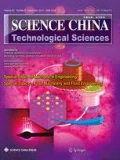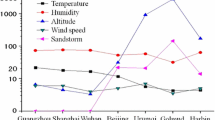Abstract
Aiming at optimizing the head shape of the CRH3 high speed train, an efficient optimization approach is proposed. The CFD analysis by solving Navier-Stokes equations is coupled with optimization calculation based on the multi-objective genetic algorithm, meanwhile the arbitrary shape deformation technique (ASD) is also introduced into the design flow, which greatly shortens the time consumption for geometry regeneration and flow field remeshing. As a result, the efficiency of the optimization calculation is highly improved. Statistical analysis is done to the designs in the design space, and the correlation between the design variables and the objective is studied to find out the key variables that most affect the objective. Response surface analysis is also performed to get the nonlinear relationship between the key design variables and the objective with the Kriging algorithm. Finally, after the optimization, an aerodynamic performance comparison between the optimal shape and the original shape reveals that the original shape of CRH3 high speed train owns a very stable aerodynamic performance and can be trustingly used in industry.
Similar content being viewed by others
References
BAKER C. The flow around high speed trains. J Wind Eng Ind Aerod, 2010, 98(6–7): 277–298
Raghunathan R S, Kim H D. Aerodynamics of high-speed railway train. Prog Aerosp Sci, 2002, 38(6–7): 469–514
Brockie N J W, Baker C. The aerodynamic drag of high speed trains. J Wind Eng Ind Aerod, 1990, 34(3): 273–290
Miettinen K. Nonlinear Multi-objective Optimization. USA Norwell Massachusetts: Kluwer Academic Publishers, 1999
Pandya M J, Baysal O. Gradient-based aerodynamic shape optimization using alternating direction implicit method. J Aircraft, 1997, 34(3): 346–352
Newman J C, Taylor A C, Barnwell R W, et al. Overview of sensitivity analysis and shape optimization for complex aerodynamic configurations. J Aircraft, 1999, 36(1): 87–96
Deb K. Multi-objective genetic algorithms: problem difficulties and construction of test problems. Evol Comput, 1999, 7: 205–230
Alexa M, Behr J, Cohen R D, et al. Computing and rendering point set surfaces. T Vis Comput Gr, 2003, 9(1): 3–15
Kobbelt L P, Bareuther T, Seidel H P. Multi-resolution shape deformations for meshes with dynamic vertex connectivity. Comput Graph Forum, 2000, 19(3): 249–259
Sobol I M, Shukman B V. Random and quasi-random sequences: Numerical estimates of uniformity of distribution. Math Comput Model, 1993, 18(8): 39–45
Sobol I M. Uniformly distributed sequences with an additional uniform property. USSR Comput Math Math Phys, 1976, 16(5): 236–242
Goel T, Vaidyanathan R, Haftka R T, et al. Response surface approximation of Pareto optimal front in multi-objective optimization. Comput Meth Appl Mech Eng, 2007, 196(4–6): 879–893
Elaoud S, Loukil T, Teghem J. The Pareto fitness genetic algorithm: Test function study. Europ J Operat Res, 2007, 177(3): 1703–1719
Jones W P, Launder B E. The prediction of laminarization with a two-equation model of turbulence. Int J Heat Mass Transfer, 1972, 15(2): 301–314
Sakata S, Aahida F, Zako M. Hybrid approximation algorithm with Kriging and quadratic polynomial-based approach for approximate optimization. Int J Num Meth Eng, 2006, 70(6): 631–654
Sakata S, Aahida F, Zako M. On applying Kriging-based approximate optimization to inaccurate data. Comp Meth Appl Mech Eng, 2007, 196(13–16): 2055–2069
Author information
Authors and Affiliations
Corresponding author
Rights and permissions
About this article
Cite this article
Sun, Z., Song, J. & An, Y. Optimization of the head shape of the CRH3 high speed train. Sci. China Technol. Sci. 53, 3356–3364 (2010). https://doi.org/10.1007/s11431-010-4163-5
Received:
Accepted:
Published:
Issue Date:
DOI: https://doi.org/10.1007/s11431-010-4163-5




